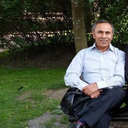Knowledge, attitude, and practices related to cutaneous leishmaniasis in an endemic focus of cutaneous leishmaniasis, Southern Iran.
Raktažodžiai
Santrauka
OBJECTIVE
To assess knowledge, attitudes, and practices (KAP) of inhabitants of an endemic area in Fars province toward cutaneous leishmaniasis (CL).
METHODS
The study was carried out in Lapui district in Fars province, south of Iran, one of the most important foci of CL in this province. Sample size (237 residents) was calculated based on population. House-to-house survey was done to collect the data regarding knowledge, attitudes, and practices of the inhabitants. The head of each household was interviewed by a trained staff to assess his/her KAP related to CL. A semi-structured KAP questionnaire was used for data collection.
RESULTS
Mean age of participants was 39 and more than half of the respondents were in the age group of 31-40. Males constituted 172 (72.5%) of subjects. Most of the respondents (84.3%) were literate. The majority of the study population (83%) had heard about Salak (local name for CL) and most of these respondents (91%) were aware that CL is presented with a cutaneous lesion. Nearly two-third of the participants (63.5%) stated the bite of mosquito (not specifically sandflies) for CL transmission. The respondents' attitude regarding the treatment of CL was not satisfactory since only 48% believed that CL can be treated by medicine. A noticeable proportion of respondents (21%) believed in indigenous medicine for the treatment of CL. A small proportion of respondents (14%) stated that traditional healers are good at treating this disease. More than two-third (69%) of respondents believed that the disease is preventable although most of interviewees did not know about preventive measures.
CONCLUSIONS
In this study, insufficient knowledge of community about infection nature, vector, transmission mode and preventive measures of CL, highlights the needs for a health education initiative to enhance the awareness of people about CL. This would improve inhabitants' contribution in control program of CL in this area.


